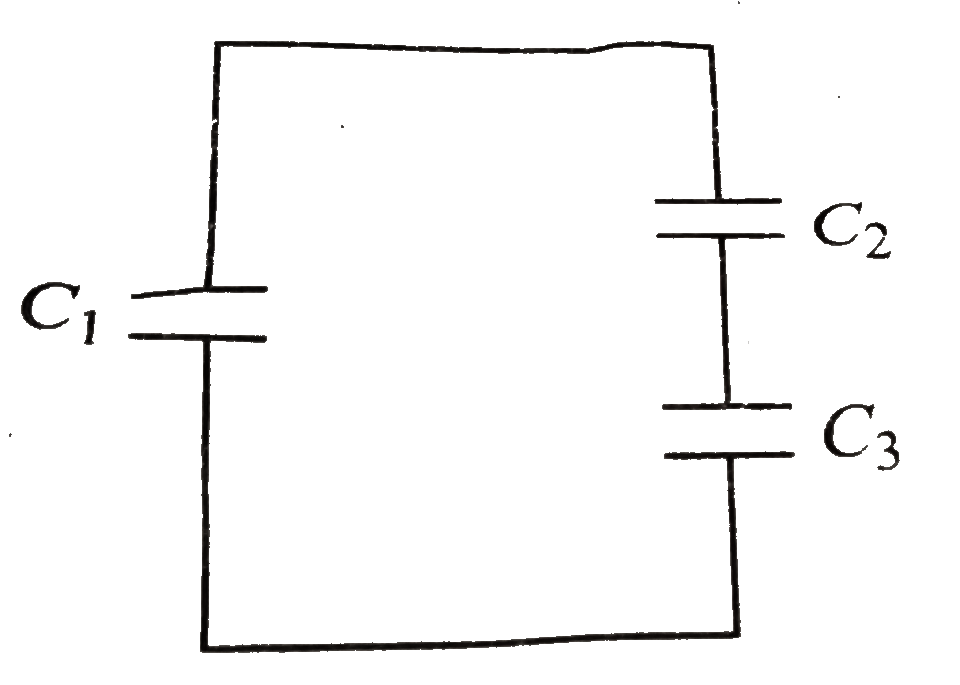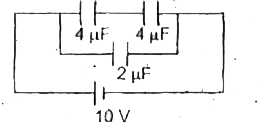Would the charge change,if the plates were pulled without battery?
Charge
Capacitance
Energy stored
All of these
The correct Answer is:D
Step by step video & image solution for Would the charge change,if the plates were pulled without battery? by Physics experts to help you in doubts & scoring excellent marks in Class 12 exams.
Updated on:21/07/2023Topper's Solved these Questions
- ELECTROSTATIC POTENTIAL AND CAPACITANCE BOOK - AAKASH INSTITUTE ENGLISHCHAPTER - ELECTROSTATIC POTENTIAL AND CAPACITANCE EXERCISE - ASSIGNMENT SECTION - B
38 Videos
- ELECTROSTATIC POTENTIAL AND CAPACITANCE BOOK - AAKASH INSTITUTE ENGLISHCHAPTER - ELECTROSTATIC POTENTIAL AND CAPACITANCE EXERCISE - ASSIGNMENT SECTION - C
53 Videos
- ELECTROSTATIC POTENTIAL AND CAPACITANCE BOOK - AAKASH INSTITUTE ENGLISHCHAPTER - ELECTROSTATIC POTENTIAL AND CAPACITANCE EXERCISE - EXERCISE
20 Videos
- ELECTROMAGNETIC WAVESBOOK - AAKASH INSTITUTE ENGLISHCHAPTER - ELECTROMAGNETIC WAVESEXERCISE - ASSIGNMENT SECTION - D Assertion-Reason Type Questions
25 Videos
- GRAVITATION BOOK - AAKASH INSTITUTE ENGLISHCHAPTER - GRAVITATION EXERCISE - ASSIGNMENT SECTION - D (ASSERTION-REASON TYPE QUESTIONS)
15 Videos
Similar Questions
A parallel plate capacitor is charged. If the plates are pulled apart
View SolutionIn the given circuit the charge on the plates of 1 μF capacitor, when 100 V battery is connected to the terminals A and B will be

View SolutionA parallel-plate capacitor has plates of area A and separation d and is charged to a potential difference V. The charging battery is then disconnected, and the plates are pulled apart until their separation is 2d. Derive expression in terms of A,d and V for
(a) the new potential difference
(b) the initial and final stored energies, Ui and Uf and
(c) the work required to increase the separation of plates from d to 2d.
View SolutionA pararllel plate capacitor has plates of area A and separation d and is charged to potential diference V. The charging battery is then disconnected and the plates are pulle apart until their separation is 2d. What is the work required to separate the plates?
View SolutionCapacitor C1 is connected to a battery and charged till the magnitude of the charge on each plate is q0. Then, the battery is disconnected and C1 is connected to two other uncharged capacitors C2andC3 as shown in figure. Final charges on the capacitors (q1,q2andq3) are related by .

View SolutionA 10.0μF parallel-plate capacitor with circular plates is connected to a 12.0V battery.
(a) What is the charge on each plate?
(b) How much charge would be on the plates if their separation were doubled while the capacitor remained connected to the battery?
(c) How much charge would be on the plates if the capacitor were connected to the 12.0V batter Y after the radius of each plate was doubled without changing their separation?
View SolutionKeeping the voltage of the charging source constant, what would be the percentage change in the energy stored in a parallel plate capcitor, if the separation between in plates were to be decreased by 10% ?
View SolutionIf initial charge on all the capacitors were zero , work done by the battery in the circuit shown is

View SolutionA parallel plate air capacitor is connected to a battery. After charging fully, the battery is disconnected and the plates are pulled apart to increase their separation. Which of the following statements is correct ?
View SolutionA parallel plate capacitor is connected to a battery. The plates are pulled apart with uniform speed. If x is the separation between the plates, then the rate of change of electrostatic energy of the capacitor is proportional to
View Solution
